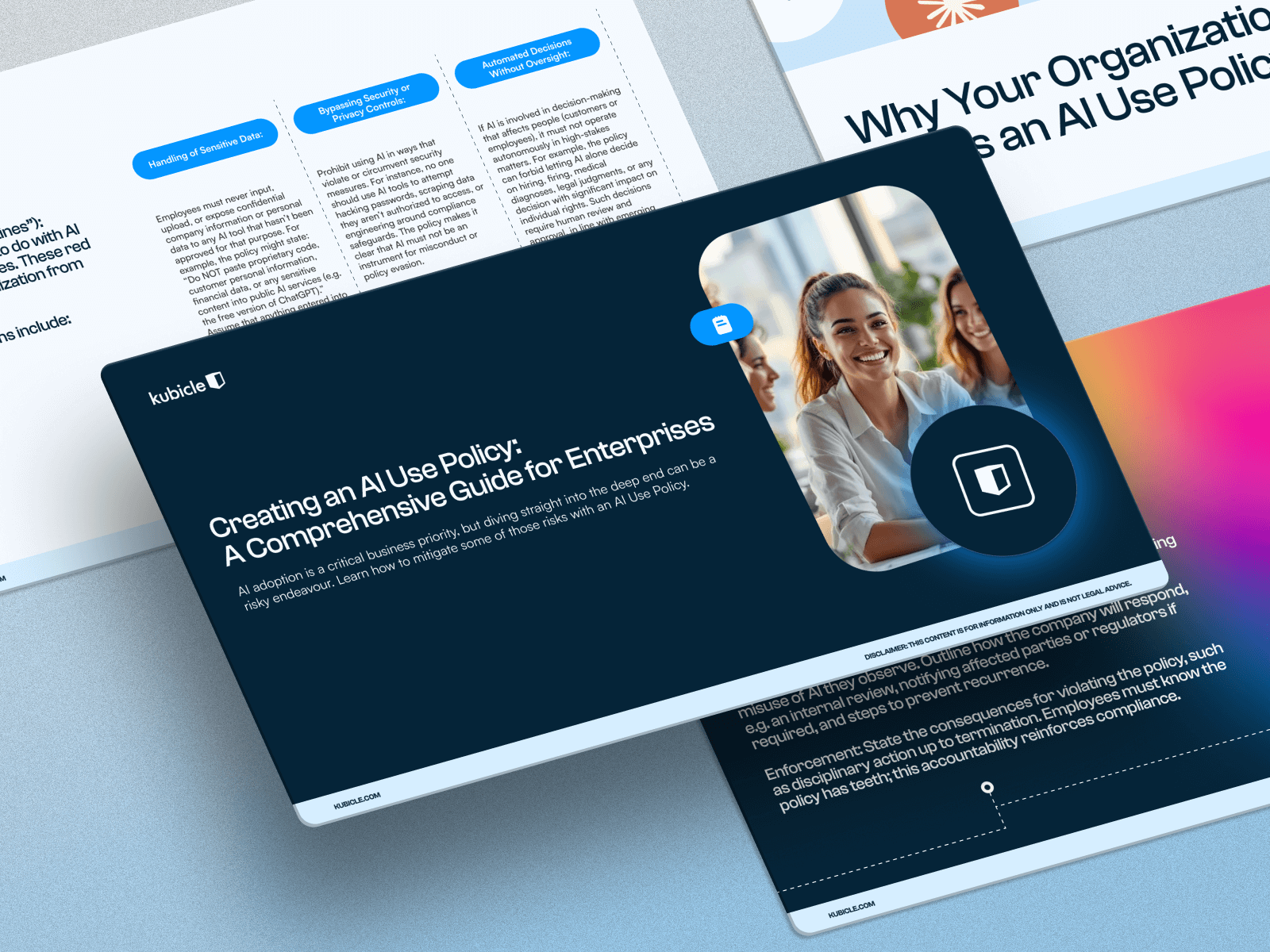Creating an AI Use Policy: A Comprehensive Guide for Enterprises
Learn how to create a robust AI Use Policy with templates, best practices, and compliance guidelines to ensure safe and ethical AI adoption.

Speak to One of our Learning Consultants Today
Talk to SalesWhy AI Use Policies Are Now Business-Critical
AI is revolutionizing business operations, from automating workflows to enhancing decision-making. But with innovation comes risk. Data breaches, copyright issues, and biased outcomes have already hit major organizations that adopted AI without clear guidelines. That’s where an AI Use Policy comes in. It provides the guardrails for safe, ethical, and compliant use of AI tools across your company.
In this blog post, we’ll explore why an AI policy is essential, what it should include, and how to implement one effectively.
Why Your Organization Needs an AI Use Policy
AI adoption is accelerating - over half of enterprises worldwide already use AI, and investments continue to grow. Without guidance, employees may inadvertently put sensitive data at risk. Consider two high-profile examples: Amazon employees leaked proprietary code into ChatGPT, which then produced outputs containing internal data. Samsung engineers uploaded confidential chip designs into a public AI chatbot, exposing trade secrets to external servers.
These incidents highlight the dangers of so-called 'shadow AI' - employees using AI tools without oversight or governance. An AI Use Policy helps avoid these risks by clearly defining acceptable and unacceptable practices.
Benefits of an AI Use Policy
An effective AI policy doesn’t just prevent mishaps - it unlocks innovation safely while giving stakeholders confidence that AI is being used responsibly. Some of the key benefits include:
1. Protecting Data & Intellectual Property by preventing leaks of confidential or customer data.
2. Ensuring Legal Compliance by aligning AI use with GDPR, CCPA, and other regulations.
3. Standardizing Practices across departments to avoid inconsistent or risky use.
4. Reducing Bias & Promoting Fairness through audits and human oversight for high-stakes decisions.
5. Building Trust with customers, partners, and regulators by demonstrating responsible AI use.
Key Components of an AI Use Policy
Creating a policy that works in practice requires more than abstract principles. It should combine clear rules with practical examples that employees can follow. Our comprehensive guide recommends structuring your policy around the following areas:
Purpose and Scope
Define why the policy exists and who it applies to.
Definitions
Clarify key terms such as 'Generative AI' and 'Personal Data'.
Permitted Uses
Encourage safe, innovative applications of AI (the 'green lights').
Prohibited Uses
Ban unsafe or unethical behaviors (the 'red lines').
Data Privacy & Security Rules
Reinforce existing frameworks for data protection.
Governance & Oversight
Assign clear responsibility for monitoring compliance.
Transparency & Accountability
Require disclosure when AI contributes to decisions.
Training & AI Literacy
Educate staff to use AI tools responsibly.
Enforcement & Reporting
Outline consequences for misuse and provide reporting channels.
Blending these components ensures the policy is comprehensive while remaining practical for day-to-day use.
How to Implement an AI Use Policy
Writing a policy is only the first step. For it to be effective, it must be embedded into the culture of the organization. Successful implementation usually involves four stages: engaging stakeholders early in the drafting process; rolling the policy out with strong leadership support; training and empowering employees to understand and apply the rules; and monitoring the policy regularly with updates as technology, risks, or laws evolve.
Aligning With Governance and Global Regulations
An AI Use Policy is no longer just a best practice - it is rapidly becoming a regulatory expectation. The EU AI Act, for example, requires proof of AI literacy and prohibits high-risk practices. GDPR and CCPA already restrict how personal data is processed. Boards are also increasingly accountable for AI risk management as part of corporate governance and ESG performance. By establishing a clear policy, your organization demonstrates both compliance and a proactive approach to ethical AI.
Preventing Shadow AI and Reducing Liability
Without a policy, employees may experiment with unapproved AI tools in ways that create hidden risks. A well-communicated policy channels that experimentation into safe, approved pathways. It also provides legal protection: if a rogue incident occurs, your organization can show it took reasonable measures, which may reduce liability and reputational damage.
Conclusion: Future-Proofing AI Adoption
AI adoption is accelerating, and so is regulation. Organizations that act now with a clear AI Use Policy will not only avoid costly missteps but also position themselves as responsible innovators. By implementing and enforcing a policy today, you safeguard data, comply with evolving laws, and empower teams to innovate confidently in the age of AI. For more depth, including a complete template and detailed framework, download the full guide: Creating an AI Use Policy: A Comprehensive Guide for Enterprises.
Check out our guide to building enterprise AI use policies.
Get the Complete Guide to Building an AI Use Policy
Download the Guide




.png)







